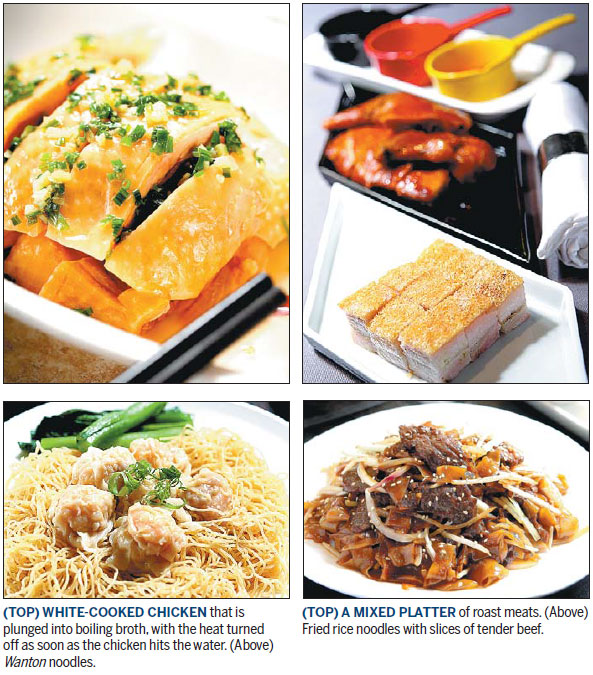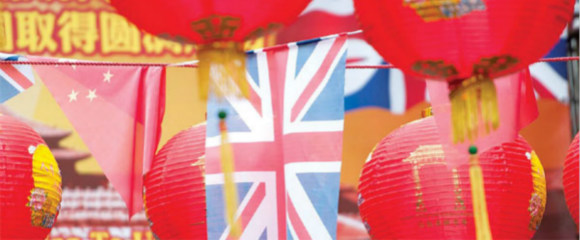South China's food touches the heart
Updated: 2016-01-22 08:40
(China Daily Europe)
|
|||||||||||

It is no accident that some of the best Chinese chefs working in international kitchens boast of being Cantonese. In a region rich in a variety of meat and known for its seafood, it is easy to cultivate a culinary pedigree that is recognized worldwide.
The flavors here focus on the natural and the seasonal. Spices are lightly used. Herbal aromatics such as ginger, spring onions and garlic are used instead to infuse the oil in stir-fries.
Fish and seafood have to be so fresh they must be alive minutes before cooking, and they are relished for their natural flavors, coaxed out lovingly and optimized by the mastery of the cooks.
Cantonese chefs are known for their barbecued meats such as the maltose-marinated fillets of pork known as chashao, and the five-spiced shaorou, which is roasted pork belly with crisp crackling and juicy layers.
Just as Beijing is known for its Peking duck, the Cantonese roast duck (or its larger cousin, the roast goose), enjoys equally formidable popularity.
These barbecued meats have also been successfully exported and are enjoyed in Chinese communities from Adelaide to Alaska. Accompanied by a steaming hot plate of rice, they have assuaged the hunger pangs and homesick blues of many a Chinese abroad.
The key word in Cantonese cooking is wok hei, the "spirit of the wok", otherwise known as sheer firepower. It is the intense heat that instantly seals the juices inside meat, the searing hot alchemy that immediately releases the fragrance of onion, ginger and garlic so that they totally infuse the food.
Most of all, it is the essence of kitchencraft honed by the flames of the open fire.
A simple dish of fried rice noodles with slices of tender beef, crunchy bean sprouts and slightly caramelized onions can test the skills of even the most accomplished cook.
Texture is also important to the Cantonese chef. Meat must be cooked just so, so that it retains its natural juiciness. This is best exemplified in a white-cooked chicken that is plunged into boiling broth, with the heat turned off as soon as the chicken hits the water. The timing must be such that the residual heat cooks the bird thoroughly.
A bird poached this way must have a thin film of juices that cools into a consomme jelly just under the skin before it is cut into serving portions and served with a spring onion and ginger dip scalded with chicken fat.
Vegetables are stir-fried until crisp but cooked, so that the diner can enjoy the sweetness and crunch. Cantonese cooks knew all about keeping vitamins intact long before they even knew what vitamins were.
The art of southern cooking is best displayed on the dim sum cart, where every little snack tells a story of creativity in the kitchen.
Barbecued pork is chopped up and stuffed into a bun, refreshing tired leftovers and creating a childhood favorite. Fresh prawns and bamboo shoots are encased in a transparent gluten-free pastry and steamed so that the pink shows through the white of the dumpling. Even the most intimidating little saucer of chicken feet steamed with a spicy bean paste is a taste sensation when you manage to get past the claws.
To wash it all down, the ubiquitous pot of Chinese tea must be present at the table, thus giving rise to the collective term the meal has adopted: yum cha, or to drink tea.
Today's Top News
Global push
AIIB chief vows to run clean, lean, green institution
'More Europe' to deal with 'triple crisis'
China gives beleaguered Tsipras a helping hand
China injects note of confidence in Davos
China and Gulf nations resume free trade talks
IMF starts to select new chief
Merkel insists on European solution for refugee crisis
Hot Topics
Lunar probe , China growth forecasts, Emission rules get tougher, China seen through 'colored lens', International board,
Editor's Picks

|

|

|

|

|

|






